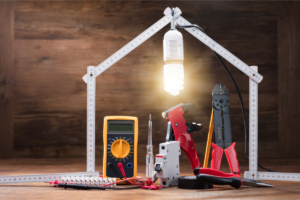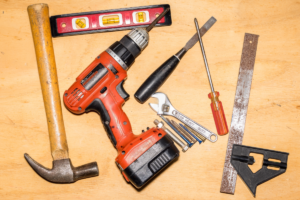Selling a House As-Is with Repair Needs: A Comprehensive Guide for Success
Selling a House As-Is with Repair Needs: A Comprehensive Guide for Success
Selling a house can be complex and challenging, especially when the property requires repairs or significant renovations. However, selling a home as-is with repair needs is not an impossible task. With the right knowledge and approach, you can navigate this process successfully and maximize your chances of selling your property fairly. In this comprehensive guide, we will walk you through the essential steps and considerations to help you achieve success when selling a house as-is with repair needs.
Understanding the Concept of Selling a House As-Is
a. What Does Selling a House As-Is Mean?
Selling a house as-is means that you are selling the property in its current condition without making any repairs or renovations. The seller does not take responsibility for addressing any repair needs or issues with the house. It transfers the commitment to the buyer to handle all necessary repairs and renovations after the sale is finalized.
When selling a house as-is, it is essential to be transparent about the condition of the property and any known defects or issues. This is typically done through a seller’s disclosure statement, which provides information to potential buyers about the property’s condition, including any known problems.
b. Pros and Cons of Selling a House As-Is
Pros of Selling a House As-Is:
- Time and Convenience: Selling a house as-is can save you time and effort, as you are not required to make repairs or prepare the property extensively for sale. This can be particularly beneficial if you need to sell quickly or are unable or unwilling to invest in repairs.
- Reduced Stress: Selling a house can be stressful, especially when dealing with repair needs. By selling as-is, you can avoid the stress of managing repairs and renovations, as well as the associated costs and time constraints.
- Potential Cost Savings: Repairs and renovations can be expensive, especially for major issues. You can avoid spending money on repairs that may not significantly increase the sale price by selling as-is. This can be advantageous if your budget is limited.
Cons of Selling a House As-Is:
- Limited Buyer Pool: Selling a house as-is may limit your potential buyer pool. Many buyers prefer move-in ready homes and may hesitate to purchase a property with known repair needs. This can result in a smaller pool of interested buyers and may take longer to sell.
- Lower Sale Price Expectations: Buyers often factor in repair costs when considering the purchase price of an as-is property. As a result, you may need to adjust your sale price expectations to account for the repairs the buyer will need to undertake. This can lead to a lower overall sale price.
- Potential Legal Issues: When selling a house as-is, it is crucial to accurately disclose any known issues or defects. Failure to disclose material defects can result in legal consequences. It is important to consult with a real estate professional or attorney to ensure compliance with relevant laws and regulations.
Selling a house as-is can be a viable option for homeowners unable or unwilling to make repairs before selling. While there are advantages, such as time savings and reduced stress, it is essential to consider the potential drawbacks, such as a limited buyer pool and lower sale price expectations. Understanding the concept of selling a house as-is and weighing the pros and cons will help you decide on the best-selling approach.
Assessing the Repair Needs of Your House
 a. Conducting a Thorough Inspection
a. Conducting a Thorough Inspection
Before selling a house as-is, it is crucial to conduct a comprehensive inspection to identify all the repair needs and potential issues with the property. Hiring a professional home inspector is highly recommended to ensure a thorough assessment. Here are some key steps in conducting a thorough inspection:
- Research and hire a reputable home inspector: Seek recommendations from friends, family, or real estate professionals and ensure the inspector has the necessary certifications and experience.
- Schedule the inspection: Coordinate with the home inspector to schedule a convenient time for the review.
- Attend the inspection: Whenever possible, be present to ask questions, gain a better understanding of the property’s condition, and receive immediate feedback from the inspector.
- Review the inspection report: Once the inspection is complete, carefully review the inspection report. It should detail all the findings, including structural issues, electrical or plumbing problems, HVAC concerns, etc.
b. Categorizing the Repair Needs
After the inspection, categorizing the repair needs will help you prioritize and plan accordingly. Here are some categories to consider:
- Critical repairs: These are repairs that pose safety hazards or impact the property’s habitability. Examples include faulty electrical systems, plumbing leaks, roof damage, or structural issues. These repairs should be addressed promptly.
- Major repairs: These repairs may not be urgent but can significantly impact the value and marketability of the house. Examples include outdated or non-functional kitchens or bathrooms, HVAC system replacements, or foundation repairs.
- Cosmetic repairs focus on improving the property’s aesthetics and may include painting, flooring updates, landscaping, or minor exterior repairs. While not critical, these repairs can enhance the house’s overall appeal.
c. Prioritizing Repairs
Once you have categorized the repair needs, it is essential to prioritize them based on urgency, cost, and potential impact on the sale. Here’s a step-by-step process to help prioritize repairs:
- Assess safety concerns: First, address any critical repairs that pose safety risks to ensure the property is safe for potential buyers.
- Estimate repair costs: Obtain estimates from contractors or professionals for each repair to determine the associated costs. This will help you evaluate the financial impact and feasibility of completing the repairs.
- Evaluate potential return on investment: Consider the possible return on investment for each repair. Focus on repairs likely to increase the house’s value and attract buyers. Consult with real estate professionals or appraisers to gain insights into the potential impact on the sale price.
- Consider market expectations: Research the local real estate market to understand buyer expectations. Determine if specific repairs or updates are commonly expected in the area to guide your decision-making process.
- Set a budget: Assess your financial resources and budget for repairs. This will help you determine which repairs are feasible within your budget constraints.
By following these steps, you can prioritize the repair needs of your house effectively and make informed decisions about which repairs to tackle before selling it as-is. Remember that transparency is essential, and accurately disclosing the property’s condition to potential buyers is crucial to maintain trust throughout the selling process.
Setting the Right Price
a. Considering Market Conditions
When selling a house as-is, it is crucial to consider the current market conditions to determine the right pricing strategy. Here are some factors to consider:
- Real estate market trends: Research and analyze the overall trends in your local real estate market. Determine whether a buyer’s market (more inventory, fewer buyers) or a seller’s market (limited stock, more buyers). This information will help you gauge buyer demand and adjust your pricing strategy accordingly.
- Days on the market: Look at the average number of days properties in your area stay on the market. If houses are selling quickly, it may indicate a strong demand where buyers are willing to take on as-is properties. However, if properties sit on the market for an extended period, you may need to adjust your pricing to attract buyers.
- Interest rates: Keep an eye on the prevailing interest rates. Low-interest rates can motivate more buyers to enter the market, increasing the demand for properties.
b. Assessing the Value of Comparable Properties
It is essential to assess the value of comparable properties in your area to set the right price for your as-is property. Here’s how you can do that:
- Research recent sales: Look for recently sold properties in your neighborhood that are similar in size, condition, and location. Pay attention to houses sold in as-is or distressed states to understand their sale prices better.
- Adjust for differences: Compare the comparable properties’ features, amenities, and conditions to your own. Make adjustments to account for any significant differences. For example, if a similar property has a recently updated kitchen while yours does not, it may impact the value.
- Consult professionals: Seek guidance from real estate agents or appraisers who have experience in your local market. They can provide insights into the current market value and help you determine a competitive price range.
c. Pricing Strategies for As-Is Properties
When pricing an as-is property, you must consider the repairs and renovations that potential buyers must undertake. Here are some pricing strategies to consider:
- Pricing below market value: Setting a slightly lower price than comparable properties in better condition can attract buyers looking for a bargain or are willing to invest in repairs.
- Accounting for repair costs: Calculate an estimated cost of repairs and deduct that amount from the property’s market value. This approach helps buyers understand the investment required and may make your property more appealing.
- Leaving room for negotiation: Set the initial asking price slightly higher than your target sale price. This lets you negotiate with potential buyers while achieving your desired sale price.
- Highlighting potential and possibilities: Emphasize the property’s potential through effective marketing and showcasing renovation possibilities. This can attract buyers looking for a project and willing to pay a fair price based on the property’s potential.
Remember that pricing an as-is property requires careful consideration. Setting the right price will attract potential buyers, generate interest, and increase the chances of a successful sale. It is advisable to consult with real estate professionals who can provide expert guidance based on local market conditions and help you make informed pricing decisions.
Disclosing Property Condition
 a. Legal Obligations for Disclosure
a. Legal Obligations for Disclosure
When selling a house as-is, it is crucial to understand and comply with the legal obligations regarding property condition disclosures. While the specific laws and regulations vary by jurisdiction, here are some general considerations:
- State and local laws: Familiarize yourself with the disclosure laws specific to your state and local jurisdiction. These laws outline the seller’s obligations to disclose material defects or issues that may affect the property’s value or safety.
- Material defects: Disclosures typically focus on material faults, which are significant issues that may impact the buyer’s decision to purchase the property or affect its value. Examples include structural damage, water leaks, mold, or electrical problems.
- Known vs. unknown defects: Sellers are generally required to disclose known defects but may not be held responsible for issues they are unaware of. However, conducting a thorough inspection and disclosing any defects or issues you are aware of is advisable to avoid potential legal complications.
- Seller’s knowledge: Disclosures usually require the seller to disclose defects they know about. This includes defects discovered through inspections, previous repairs, or personal experiences with the property.
b. Preparing a Seller’s Disclosure Statement
A seller’s disclosure statement is a critical document that provides potential buyers with information about the property’s condition. Here are some steps to prepare a comprehensive seller’s disclosure statement:
- Research the required form: Find out if your jurisdiction has a specific format or template for the seller’s disclosure statement. This form will typically guide you in disclosing relevant information.
- Be thorough and accurate: Take your time to complete the disclosure statement accurately. Include all known defects, repairs, renovations, and other relevant information about the property’s condition. Be transparent and honest in your responses.
- Seek professional assistance: If you’re unsure about certain disclosures or legal requirements, consult a real estate attorney or agent experienced in your area. They can review the disclosure statement and guide to ensure compliance with applicable laws.
- Document supporting evidence: When possible, provide supporting documentation or records related to repairs, renovations, or past issues. This helps substantiate the information provided in the disclosure statement and demonstrates your commitment to transparency.
c. Honesty and Transparency in Disclosures
When selling a house as-is, honesty and transparency in disclosures are crucial for maintaining trust with potential buyers. Here are some important considerations:
- Full disclosure: Disclose all known material defects, even if you believe they have been adequately addressed or repaired. Buyers appreciate transparency, and attempting to hide or downplay issues can lead to legal complications and damage your reputation.
- Err on the side of caution: If you’re uncertain whether to disclose a particular issue, it’s generally better to tell it. It is advisable to uncover potential problems or concerns and let buyers make informed decisions.
- Updates and changes: If repairs or renovations have been made since the initial inspection or disclosure, provide updated information to buyers. This ensures they have the most accurate and up-to-date understanding of the property’s condition.
- Consult professionals: When in doubt, seek advice from real estate agents, attorneys, or inspectors, who can guide disclosure requirements and best practices.
By understanding the legal obligations for disclosure, preparing a comprehensive seller’s disclosure statement, and maintaining honesty and transparency throughout the process, you can protect yourself legally and build trust with potential buyers. Open communication and accurate disclosures create a smoother transaction and a positive selling experience.
Making Repairs vs. Selling As-Is
a. Weighing the Financial Considerations
When deciding whether to make repairs or sell a house as-is, carefully considering the financial aspects involved is essential. Here are some key considerations:
- Repair costs: Determine the estimated costs of necessary repairs and renovations. Obtain quotes from contractors or professionals to clearly understand the expenses involved. Compare these costs to your budget and assess whether you can afford the repairs without significantly impacting your financial situation.
- Return on investment (ROI): Consider the potential return for the repairs. Will the cost of repairs substantially increase the property’s value and attract higher offers from potential buyers? Research local market trends and consult with real estate professionals to understand the potential impact on the sale price.
- Timeframe: Evaluate the time it will take to complete the repairs. If you need to sell quickly, making extensive repairs may not be feasible within the desired timeline. Selling as-is may be a more practical option in such cases.
- Holding costs: Consider the ongoing expenses of owning the property, such as mortgage payments, property taxes, insurance, and maintenance costs. If you decide to make repairs, the longer it takes to sell the house, the more holding costs you will incur.
b. Deciding Which Repairs to Tackle
If you choose to make repairs before selling, it is important to prioritize and focus on the most essential areas. Here’s a step-by-step process to help you decide which repairs to tackle:
- Critical repairs: Begin by addressing any repairs that pose safety risks or significantly affect the property’s habitability. These repairs should take top priority to ensure a safe living environment for potential buyers.
- Cosmetic improvements: Consider making minor cosmetic improvements that can enhance the property’s overall appeal. Simple updates like fresh paint, landscaping, or improving curb appeal can make a positive impression on potential buyers.
- High-impact repairs: Identify repairs that can significantly impact the property’s value or marketability. These may include repairing or replacing major roof, HVAC, or plumbing systems. Focus on repairs likely to give buyers confidence in the property’s condition.
- Return on investment: Evaluate the potential ROI for each repair. Consider the repair cost and the possible increase in the sale price. Prioritize repairs that offer a higher return on investment.
c. Understanding the Impact on Sale Price
The decision to make repairs or sell as-is can impact the property’s sale price. Here are some factors to consider:
- Market expectations: Research the local real estate market to understand buyer expectations. Determine if specific repairs or updates are commonly expected in the area. Failing to meet market expectations may result in a lower sale price or fewer interested buyers.
- Cost vs. value: Assess whether the cost of repairs will be recouped through a higher sale price. Some repairs may significantly impact the property’s value more than others. Consult with real estate professionals or appraisers to understand the potential increase in the sale price based on the repairs made.
- Buyer perception: Buyers often prefer move-in ready homes and may be willing to pay a premium for properties in excellent condition. You may attract more buyers and potentially receive higher offers by making necessary repairs.
- Buyer negotiation power: Selling a house as-is may give buyers more negotiation power, as they may factor in the repair costs when making an offer. This can result in a lower sale price than making the repairs upfront.
Ultimately, deciding to make repairs or sell a house depends on your financial situation, timeline, and market conditions. Consider the financial implications, prioritize repairs strategically, and understand the potential.
Preparing Your Property for Sale
 a. Staging an As-Is House
a. Staging an As-Is House
Staging is an effective strategy to showcase the potential of your as-is house and create a favorable impression on potential buyers. Here are some tips for staging an as-is home:
- Declutter and depersonalize: Remove personal items, excess furniture, and clutter to create a clean and spacious environment. This allows potential buyers to envision themselves living in the space.
- Clean and freshen up: Clean the house, including carpets, windows, and surfaces. Eliminate any odors and ensure a fresh and inviting atmosphere.
- Neutralize décor: Use neutral colors and simple décor to appeal to a broader range of buyers. Neutral tones create a blank canvas and help buyers envision their style and preferences.
- Highlight key features: Showcase the unique and desirable features of the property. If there are architectural details, a fireplace, or stunning views, draw attention to these aspects.
- Maximize natural light: Open curtains and blinds to allow natural light to flood the space. Well-lit rooms feel more inviting and spacious.
- Furniture placement: Arrange furniture strategically to create a sense of flow and highlight the functionality of each room. Avoid overcrowding and ensure there is ample space for buyers to move around.
b. Enhancing Curb Appeal
First impressions matter, and enhancing the curb appeal of your property can significantly impact potential buyers’ perceptions. Consider the following tips to boost curb appeal:
- Landscape maintenance: Trim overgrown bushes, mow the lawn, and ensure the overall landscape is well-maintained. Plant flowers or add potted plants to add color and vibrancy.
- Exterior repairs: Address any visible exterior repairs, such as peeling paint, broken fences, or damaged gutters. A well-maintained exterior suggests that the property has been cared for.
- Clean and tidy: Power wash the exterior surfaces, including the siding, driveway, and walkways. Clean windows and entryways to create a polished look.
- Front door and entryway: Consider painting the front door in an attractive color to make it stand out. Add a new doormat, fresh plants, or outdoor lighting to create a welcoming entryway.
- Lighting: Illuminate the exterior with well-placed lighting. This enhances the property’s appearance during evening viewings and adds a sense of security.
c. Highlighting Potential and Possibilities
When selling an as-is house, showcasing the potential and possibilities the property offers is essential. Here are some ways to do that:
- Clear communication: Communicate in your listing and marketing materials that the house is being sold as-is. Emphasize that buyers can customize and renovate according to their preferences.
- Virtual staging or renderings: Consider using virtual staging or renderings to showcase the property’s potential. This allows buyers to visualize how the space could look with renovations or updates.
- Provide ideas and inspiration: Include suggestions or examples of possible renovations or updates that could enhance the property. This helps buyers see the possibilities and sparks their imagination.
- Create vision boards or mood boards: Compile images of design inspiration, renovation ideas, or before-and-after pictures to demonstrate the transformation potential of the house. These visual aids can help buyers envision the possibilities.
- Collaborate with professionals: Consult with interior designers or home renovation experts who can advise on potential improvements. Their expertise can help buyers see the property’s potential and make informed decisions.
You can create a positive impression on potential buyers by effectively staging an as-is house, enhancing curb appeal, and highlighting the potential and possibilities. This can increase their interest and make them more willing to consider the property, even with its repair needs. Remember to present the property in the best possible light while remaining transparent about its condition and selling it as-is.
Marketing and Advertising
a. Leveraging Online Platforms
In today’s digital age, online platforms play a crucial role in marketing and advertising your as-is house. Here are some strategies to effectively leverage online platforms:
- Real estate websites: List your property on popular websites such as Zillow, Trulia, Redfin, and Realtor.com. These platforms have a wide reach and attract potential buyers actively searching for properties.
- Create a compelling listing: Craft a well-written and detailed listing description that highlights the unique features and potential of the property. Be transparent about its as-is condition while emphasizing its value and investment opportunities.
- High-quality photos: Invest in professional photography to capture high-quality images of your property. Clear, well-lit, and visually appealing photos attract more attention and generate higher interest from potential buyers.
- Video tours: Consider creating a virtual tour or video walkthrough of the property. This gives potential buyers a comprehensive view of the house, even if they cannot physically visit it. Virtual tours can be shared on your website, social media, and real estate platforms.
- Utilize social media: Leverage the power of social media platforms like Facebook, Instagram, and LinkedIn to market your as-is property. Create engaging posts, share high-quality photos, and utilize targeted advertising options to reach a broader audience.
b. Professional Photography and Virtual Tours
Visual representation is critical when marketing an as-is property. Consider the following tips for professional photography and virtual tours:
- Hire a professional photographer: Enlist the services of a professional photographer experienced in real estate photography. They have the skills and equipment to capture the property’s best features and create visually appealing images.
- Highlight key areas: Ensure that the photographer focuses on capturing the essential areas of the house, including the kitchen, living spaces, bedrooms, and any unique selling points. These images should showcase the potential and possibilities of the property.
- Virtual tours: Consider creating virtual tours using specialized software or hiring a professional videographer. Virtual tours allow potential buyers to virtually walk through the property, providing a more immersive experience and helping them visualize the space.
- Drone photography: If applicable, consider incorporating drone photography to capture aerial views of the property and its surroundings. This can be particularly useful for showcasing large plots of land or attractive features like swimming pools or gardens.
c. Targeted Advertising for As-Is Properties
Targeting advertising is key to maximizing the exposure of your as-is property and reaching potential buyers interested in such properties. Here are some strategies to consider:
- Identify your target audience: Determine the demographics and characteristics of potential buyers more likely to purchase an as-is property. This may include investors, house flippers, or individuals looking for renovation projects.
- Tailor your message: Craft marketing materials and advertisements that specifically address the needs and interests of your target audience. Highlight the potential for customization, investment opportunities, or the chance to create their dream home.
- Local networking: Connect with local real estate agents, investors, and contractors specializing in as-is properties. They may have a network of potential buyers or can provide referrals.
- Online forums and groups: Join online forums or social media groups dedicated to real estate investing, house flipping, or property renovations. Engage in discussions and share information about your as-is property to generate interest from potential buyers within these communities.
- Print advertising: Although online marketing is dominant, don’t overlook traditional print advertising methods. Consider placing ads in local newspapers, real estate magazines, or newsletters that target your desired audience.
Remember to monitor the performance of your marketing efforts and make adjustments as needed. By leveraging online platforms, utilizing professional photography and virtual tours, and implementing targeted advertising strategies, you can effectively market and promote your as-is property to the right audience and generate interest from potential buyers.
Attracting the Right Buyers
 When selling a house as-is with repair needs, it’s important to target the right buyers who are interested in taking on such properties. Here are three key buyer groups to focus on:
When selling a house as-is with repair needs, it’s important to target the right buyers who are interested in taking on such properties. Here are three key buyer groups to focus on:
a. Investors and House Flippers
Investors and house flippers are often actively seeking as-is properties with repair needs. These buyers are experienced in evaluating potential investment opportunities and are willing to take on renovation projects. To attract this buyer group:
- Highlight the investment potential: Emphasize the property’s potential return on investment (ROI). Provide information on the potential after-repair value (ARV) and the opportunity to increase the property’s value through renovations.
- Provide repair estimates: Share detailed information about the estimated repair costs. If possible, obtain quotes or estimates from contractors to give potential investors a clear understanding of the renovation expenses involved.
- Showcase profit potential: Present the property’s repair needs as an opportunity for buyers to acquire a property at a lower price and generate a profit through strategic renovations and resale.
- Market to real estate investment groups: Reach out to local real estate investment groups, networking events, or online forums where investors and house flippers gather. Share information about your as-is property and its potential for a profitable investment.
b. First-time Homebuyers and DIY Enthusiasts
First-time homebuyers and DIY enthusiasts willing to take on repair projects can also be potential buyers for as-is properties. To attract this buyer group:
- Emphasize affordability: Position your as-is property as an affordable option for first-time homebuyers willing to invest time and effort into renovations. Highlight the potential to customize the property to their preferences.
- Provide renovation ideas: Offer suggestions or examples of transforming the property. Provide ideas for cosmetic updates or share potential floor plans to spark their imagination.
- Promote creative financing options: First-time homebuyers may have limited funds for renovations. Research and share information about renovation loans or programs that can assist buyers in financing the purchase and necessary repairs.
- Leverage social media and online platforms: Utilize social media channels, online listings, and platforms that cater to first-time homebuyers and DIY enthusiasts. Engage with these communities, share renovation tips, and showcase your as-is property as a project with great potential.
c. Real Estate Agents with Investor Clients
Collaborating with real estate agents and investor clients can significantly increase the exposure of your as-is property. Here’s how to attract real estate agents with investor clients:
- Network with real estate agents: Connect with local agents who specialize in working with investors and have experience with as-is properties. Attend industry events or join real estate agent networking groups to build relationships.
- Provide detailed information: Share comprehensive information about the property’s condition, repair needs, and potential. This helps real estate agents assess whether the property aligns with the criteria of their investor clients.
- Offer incentives: Consider offering a competitive commission or bonus to real estate agents who bring a successful buyer for your as-is property. This can motivate agents to promote and show your property to their investor clients actively.
- Provide marketing materials: Prepare marketing materials specifically tailored for real estate agents. These materials should highlight the property’s potential, investment opportunities, and the benefits of working with you as the seller.
By targeting the right buyers, such as investors, house flippers, first-time homebuyers, and real estate agents with investor clients, you increase the chances of finding a buyer who sees the value in your as-is property and its repair needs.
Negotiating Offers and Terms
Once you start receiving offers for your as-is property, navigating the negotiation process effectively is essential. Here are some key considerations when negotiating offers and terms:
a. Evaluating Buyer Offers
When evaluating buyer offers, look beyond the purchase price alone. Consider the following factors:
- Purchase price: Compare the offered price to the market value of your property and its repair needs. Assess whether the price aligns with your expectations and the property’s condition.
- Financing contingencies: Evaluate whether the buyer’s offer is contingent on securing financing. A cash offer or a pre-approved buyer may be more attractive, as it reduces the risk of the deal falling through due to financing issues.
- Earnest money deposit: Take note of the amount of earnest money the buyer is willing to put down. A higher earnest money deposit demonstrates the buyer’s seriousness and commitment to the transaction.
- Timeline and closing date: Consider the proposed timeline and closing date. If you’re looking for a quick sale, an offer with a shorter closing period may be more appealing.
- Buyer’s qualifications: Assess the buyer’s capabilities, including their financial stability and experience in purchasing as-is properties. Consider their ability to handle the repairs and renovations necessary for the property.
- Contingencies and inspection periods: Review any contingencies or inspection periods included in the offer. Determine whether the buyer’s contingencies align with your selling goals and timeline.
b. Considering Contingencies
Contingencies are conditions that must be met for the sale to proceed. Common contingencies include inspections, financing, and selling the buyer’s current property. Consider the following when evaluating contingencies:
- Inspection contingencies: Understand the scope of the buyer’s inspections. As an as-is seller, you may be less inclined to make repairs based on inspection findings. Evaluate whether the inspection contingency allows the buyer to request repairs or negotiate the price based on the inspection report.
- Financing contingencies: If the buyer’s offer is contingent on financing, review the terms and conditions related to the loan approval. Consider the buyer’s financial qualifications and the likelihood of the loan being approved.
- Sale of the buyer’s property: If the offer is contingent on the sale of the buyer’s current property, assess the status and timeline of the sale. Evaluate the potential risks and delays associated with this contingency.
- Time frames: Pay attention to the time frames associated with each contingency. Ensure they align with your desired timeline for closing the sale.
c. Negotiating Repairs and Price Adjustments
When negotiating repairs and price adjustments, keep the following in mind:
- Repair requests: If the buyer requests repairs after the inspection, evaluate the nature and extent of the repairs. Determine which repairs are essential for the property’s safety, habitability, or compliance with local regulations.
- Consider cost estimates: Obtain repair cost estimates from reputable contractors to assess the financial impact of the requested repairs. Consider whether the costs are reasonable and justifiable given the property’s condition.
- Negotiating price adjustments: Instead of making repairs, you may consider negotiating a price adjustment to account for the necessary repairs. This lets the buyer handle the repairs and assume the associated costs.
- Find a middle ground: Work with the buyer for a mutually acceptable resolution. Consider offering a credit at closing or reducing the purchase price to accommodate the repairs needed.
- Be open to reasonable requests: Recognize that buyers may have legitimate concerns or requests. Evaluate these requests objectively and be willing to find a compromise that satisfies both parties.
They maintain clear and open communication with the buyer and agent throughout the negotiation process. Seek the advice of a real estate professional or attorney if needed to ensure you’re making informed decisions. Ultimately, aim for a win-win outcome where both parties feel satisfied with the terms of the agreement.
Closing the Sale
 The closing process is the final step in selling your as-is property. It involves several important tasks to ensure a smooth and successful transaction. Here are the key considerations when closing the sale:
The closing process is the final step in selling your as-is property. It involves several important tasks to ensure a smooth and successful transaction. Here are the key considerations when closing the sale:
a. Navigating the Escrow Process
Escrow is a neutral third-party service that holds the necessary documents and funds during the transaction process. Follow these steps to navigate the escrow process:
- Choose an escrow company: Select a reputable company experienced in handling real estate transactions. Your real estate agent or attorney can provide recommendations.
- Open an escrow account: Once you’ve chosen an escrow company, they will guide you through opening an account. This involves providing the necessary documents and funds to initiate the process.
- Provide required documentation: Work closely with the escrow officer to provide all the necessary documentation, including the sales contract, seller’s disclosure statement, and any additional disclosures specific to your jurisdiction.
- Coordinate with the buyer: Communicate with the buyer and their agent to ensure they fulfill their obligations during the escrow process, such as completing inspections, securing financing, and meeting other contingencies.
- Address contingencies and repairs: If repairs or contingencies are to be resolved, work with the buyer to ensure they are completed within the specified time frames.
- Coordinate with relevant parties: Communicate with your real estate agent, attorney, and any other involved parties to ensure a seamless flow of information and documentation throughout the escrow process.
b. Reviewing the Closing Documents
During the closing process, you’ll be presented with various documents that require careful review. These may include:
- Closing statement: The closing statement details the financial aspects of the transaction, including the final purchase price, prorated taxes, and any credits or debits related to repairs or adjustments.
- Settlement statement: The settlement statement provides an itemized breakdown of all closing costs and fees associated with the sale. Review it thoroughly to ensure accuracy and address any discrepancies.
- Title documents: Examine the title documents, including the preliminary title report and title insurance policy, to ensure the property’s title is clear and free of any liens or encumbrances that could affect the sale.
- Transfer of ownership documents: Sign and review records related to the transfer of ownership, such as the deed, bill of sale, and any other required legal forms.
- Loan payoff documents (if applicable): If you have an outstanding mortgage on the property, review and sign the loan payoff documents to ensure the mortgage is satisfied and the lien is released.
c. Ensuring a Smooth Transaction
To ensure a smooth closing, consider the following steps:
- Stay in communication: Maintain open lines of communication with the escrow officer, real estate agent, and buyer throughout the process. Respond promptly to any requests for information or documentation.
- Coordinate logistics: Work with the escrow officer and buyer to schedule a convenient closing date, time, and location for all parties involved. Ensure that you have all necessary documents and identification ready for the closing.
- Conduct a final walkthrough: Before closing, schedule a final walkthrough with the buyer to verify the property’s condition and ensure that any agreed-upon repairs have been completed satisfactorily.
- Attend the closing: Attend the closing appointment prepared with the necessary identification and any outstanding documents requested by the escrow officer. Review and sign all relevant documents, paying close attention to ensure accuracy.
- Receive funds: Once all documents are signed, and funds have been transferred, you will receive the proceeds from the sale. Ensure that the funds are securely deposited into your designated account.
- Transfer utilities and keys: Coordinate with the buyer to transfer utility accounts into their name and provide them with the keys to the property on the closing date.
- Follow legal requirements: Abide by any legal requirements specific to your jurisdiction, such as filing required documents with the appropriate government agencies or reporting the sale for tax purposes.
By navigating the escrow process, carefully reviewing closing documents, and ensuring a smooth transaction, you can successfully close the sale of your as-is property. Collaborate closely with your real estate agent, attorney, and escrow officer to address any questions or concerns during the closing process.
Conclusion
Selling a house as-is with repair needs can be a viable option for homeowners looking to sell quickly or avoid the hassle of making extensive repairs. However, success in selling an as-is property relies on careful planning, effective marketing, and strategic decision-making.
In this comprehensive guide, we have covered various aspects of selling a house as-is with repair needs. We began by understanding the concept of selling a house as-is and exploring its pros and cons. We then delved into assessing the repair needs of your home, categorizing repairs, and prioritizing them based on their importance.
Setting the right price is crucial when selling an as-is property. We discussed considering market conditions, assessing the value of comparable properties, and exploring pricing strategies for as-is properties. Disclosing the property’s disease is a legal obligation, and we explored the necessary steps to prepare a seller’s disclosure statement while emphasizing honesty and transparency in disclosures.
We also examined the decision-making process between making repairs and selling as-is, considering financial considerations, deciding which repairs to tackle, and understanding the impact on the sale price. Furthermore, we discussed preparing the property for sale, including staging, enhancing curb appeal, and highlighting potential possibilities to attract potential buyers.
Marketing and advertising play a significant role in selling any property, and we explored leveraging online platforms, professional photography, virtual tours, and targeted advertising strategies specific to as-is properties. We discussed targeting investors, house flippers, first-time homebuyers, and real estate agents with investor clients to attract the right buyers.
Negotiating offers and terms is crucial to achieving a successful sale, so we covered evaluating buyer offers, considering contingencies, and negotiating repairs and price adjustments. Finally, we explored the closing process, including navigating an escrow, reviewing closing documents, and ensuring a smooth transaction.
Selling a house as-is with repair needs requires careful consideration, strategic planning, and effective execution. Following the comprehensive guide can increase your chances of success in selling your as-is property while achieving your desired outcomes.
Remember to consult with real estate professionals, such as agents and attorneys, to ensure compliance with local laws and regulations and receive personalized guidance throughout the selling process. Good luck with your as-is property sale!
To learn more details, let’s talk with Amar REALTOR®.
Let’s schedule a meeting with Amar REALTOR to review all your Real Estate objectives at a time that works for you.
 Please Click the link below to schedule a time on my online calendar!
Please Click the link below to schedule a time on my online calendar!
https://www.amarrealtor.com/meetingwithamarrealtor/
Contact Amar REALTOR® today for more information about Buying/Selling a Home in the Bay Area!
Amar REALTOR® offers expert real estate services with proven results in Bay Area Housing Market, including Homes for sale in Santa Clara County, San Mateo County, Contra Costa County, and Alameda County.
More Interesting Information about Bay-Area Real Estate
A Beginner’s Guide to Purchasing a Fixer-Upper Home as a First-Time Buyer
The Ultimate Decision: Should First-Time Homebuyers Consider Fixer-Uppers?
The Risks and Rewards of Investing in a Fixer-Upper Home as a First-Time Buyer
Fixer-Upper vs. Move-In Ready: What First-Time Homebuyers Need to Know
First-Time Homebuyers: Types Of Mortgages
The Risks of Unlicensed Contractors
First-Time Homebuyers: What You Need To Know Before Relocating?
